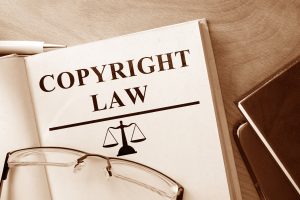Understanding fair use is one of the most crucial parts of copyright services. Generally speaking, this is a legal idea that applies to all sorts of works, such as audio, video, and written works.
Fair use is a critical component of intellectual property law. In certain circumstances, it is permissible to use source material for educational purposes, while it is not permitted in other cases. Since the use of the source material must be proportionate to the original work, this is the case.
The fair use test, also known as the flexible proportionality test, examines the original work’s purpose, quantity, and influence on the market before determining whether it has been used relatively. There are, however, certain exceptions to this rule. A legal professional should be consulted if you are unclear if a work is protected under fair usage.
In the case of Bob Dylan’s ‘There’s no weatherman,’ for example, the use of the same work in advertising for a raincoat would not be recognised as fair use if the piece was published in a small literary magazine.
What exactly is lawful (fair) use?
Fair use is a legal concept that describes specific acts that may be carried out, under certain circumstances, without being considered a violation of a work’s intellectual property. There is a notion known as fair use, which is sometimes known as free use, fair dealing, or fair practice when it comes to intellectual property. The premise behind this is that if copyright rules are too restrictive, they may inhibit free expression and news reporting, as well as result in excessive fines for trivial or inadvertent inclusion in works.
Fair use may be interpreted in two ways:
- broadly
- narrowly
As the law allows, courts tend to prefer the former view over the latter. When evaluating whether or not to authorize a specific use of a copyrighted work, the first thing to assess is the nature of the work in question.
For example, concerning the ‘copyright my book’ option, a cinematic version of a book may not only not hinder book sales, but it may help them increase in number. This would be considered fair use of the copyrighted material and prosecuted.
Fair use of copyright facts
The notion of fair use of copyrighted work is essential in copyright law.
- This refers to using a work in any format or way as it serves as a replacement for the sale of the original work in its original form.
- This is an essential difference since courts have historically favoured markets over rights holders in intellectual property disputes.
- While fair use is typically authorised, the amount to which it is used must be proportionate to the original work to be considered fair.
Fair usage permits
Using quotations or excerpts from works made available to the public may be permissible under fair use rules if the work is made available (i.e. published). If the following criteria are met:
- In line with the principles of fair dealing, the use is deemed lawful.
- The material mentioned is justified.
- No more information is provided than is necessary.
- It is essential to credit the source of the referenced text and the author’s identity.
Some instances of free work:
Fair use legislation protects the majority of copyrighted works. This safeguards the originality of creative works such as –
- literary works
- music
- films
- architecture
- computer software
- websites
While the legislation does not cover factual information, concepts, systems, or operation methods, it protects some works that may be utilized in several circumstances.
Articles and films published online and images that may be copied and distributed for non-commercial purposes are examples of typical free uses of copyright material for the copyright my logo option.
- News reporting purposes.
- Inclusion was unintentional.
- Most governments prohibit private and educational use to some degree.
Incidental Infringement
The meaning of incidental infringement is comprehensive and does not apply to a specific film or sound recording. It is the act of incorporating an original work, such as a video or sound recording, into another artwork. Incidental infringement of this work does not breach its copyright if it is not the topic of another work.
Furthermore, it does not infringe on its copyright if it is distributed to the public or exhibited, played, or conveyed. This occurs when a portion of a work is mistakenly incorporated into another.
- Example: A Christmas video that accidentally recorded some copyright work, such as background music or a poster that just happened to be on a wall in the backdrop, would be considered a typical example of this kind of infringement.
Consider the following points:
The quantity and nature of the infringement and the public interest are just a few of the numerous things to consider when it comes to the fair use of copyright law.
- The details of what is permissible will be determined by national laws
- The same differs from one country to the next in terms of actual provision and implementation.
- Cases involving fair dealing may be difficult to resolve since decisions are based on individual facts and judgments.
- This may be a particularly challenging area of copyright law to navigate.
- It is recommended that you always get permission from the property owner for further queries.
Fair dealing law in the United Kingdom.
The UK’s Fair Dealing Legislation safeguards consumers’ rights by establishing a framework for using quotes.
- This law only applies to articles, reviews, and other materials that allude to previously published work.
- Quotes used in a news story may not be considered fair dealing if they are not meant for editorial objectives.
- This is where the ‘fair deal’ safeguard comes into play.
Conclusion
When is the ideal moment to sort out the details of your creative work’s copyright agreement? Copyrightcover Services has together a team of highly experienced individuals from various industries to help with all aspects of fair copyright legislation. We’ll get back to you as quickly as possible if you contact us for further consultations.


